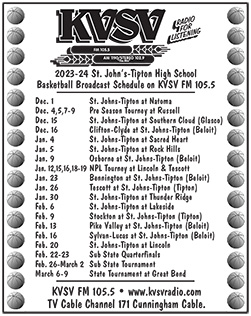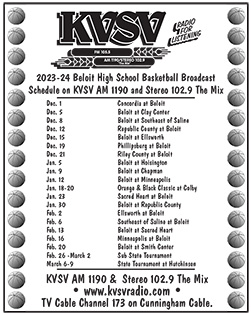


Pearl Harbor.....A Day That Lives In Infamy
Pearl Harbor - A Day That Lives in Infamy By Terry Bailey Seventy five years ago today, the Japanese launched an attack on the United States Pacific Fleet at Pearl Harbor. President Franklin Roosevelt called it a “Day that will live in Infamy” Japan’s sneak attack unified the citizens of the United States and removed all doubts of isolationism.
Since Japan’s victory in the Russo-Japanese War in 1904 it had sought status as an equal among the modem nations of the world. As a small island country with virtually no natural resources, they realized they would need an empire to provide raw materials necessary for a modern industrialized nation. The Japanese needed more territory to establish the East Asia Co-Prosperity Sphere. They instigated an incident in Manchuria in 1931 and used that as an excuse to invade that territory and annex it. The Japanese initiated war with China on July 7, 1937. China, deeply involved in its own civil war was unable to expel the invading Japanese. The United States, long a friend of China, exerted pressure on the Japanese to give up its invasion of China. On May 7, 1940, President Roosevelt ordered the US. Paciï¬c Fleet to Pearl Harbor for naval maneuvers. The United States imposed an embargo on scrap metal and oil in July of 1940. These two items were necessary to fuel Japan’s war machine. Japan, wishing to be the dominant country in the Far East, was left with two choices. They could give in to the Americans or continue their path of aggression. The French, English and Dutch abandoned their colonies in Southeast Asia because of the European war against Germany and Italy, It was left to the Americans to turn back the Japanese through diplomacy and economic force. Diplomacy was about all the Americans could do. The United States was a country torn in two directions. Franklin Roosevelt could see the direction the war was taking in Europe. Only England stood alone against the forces of Hitler and Mussolini. The Japanese signed a treaty with Germany and Italy and seemed bound on conquering all of far eastern Asia. Roosevelt would have liked to put the country on more of a war footing, sensing the inevitability of war. He was opposed by a sizable force of isolationists or paciï¬sts lead by industrialist Henry Ford and the famous aviator Charles Lindbergh. The isolationists felt that America should not be forced into another European war. When the Draft Bill was voted on in the House on July 21, 1941, it passed by a margin of 203 to 202. The Japanese successfully invaded French Indo-China on July 24, 1941. The U.S., on July 26, 1941, retaliated with a total trade embargo with Japan. The military gained control when General Tojo became Prime Minister. Negotiations continued in Washington, DC. with no signs of success. The American Pacific Fleet was permanently assigned to Pearl Harbor. This move was intended as a subtle warning to the Japanese. This fleet and the American Far East Fleet in Manila Bay were the only forces that were a threat to the Japanese. Yamamoto, with the assistance of Air Commander Genda, developed a superb plan to attack the Paciï¬c fleet. Yamamoto, who had studied and lived in Harvard and Washington, DC. said, “We can operate at will in the Paciï¬c for 6 months to a year. After that I can guarantee nothing.” There were many obstacles. Normal aircraft torpedoes needed a depth of 75 feet of water. Pearl Harbor’s depth was only 40 feet. Genda developed a new torpedo that would function in 30 feet of water. The route to Hawaii was 3500 miles of rough, winter seas. Refueling would be hazardous. It was almost an impossibility of traveling over 3500 miles of exposed sea with a 35 ship task force without being undetected. Timing and surprise would have to be perfect. The Americans had developed a decoding machine called Magic that could decode the Japanese diplomatic code, known as Purple. There were limits to this diplomatic code, but it did give the Americans insight into the actions of the Japanese. They learned that something was going to happen in the Paciï¬c, but they weren’t sure what. The best guess was that the Japanese would attack the Philippines or the British base at Singapore in Malaysia. It wasn’t until the morning of Dec. 7 that intelligence ofï¬cers decided that Pearl Harbor might be the target, but by the time their frantic pleas worked their way through the system and a message was sent to the Army and Navy commanders at Pearl Harbor, the attack was over; On December 7th Admiral Nagamo, commander of the Japanese task force, turned his six air craft carriers into the wind in the pre-dawn darkness and launched two waves of 350 attack aircraft toward the US Paciï¬c Fleet at Pearl Harbor. The attack at Pearl Harbor was swift and succeeded beyond the Japanese wildest dreams. The ï¬rst wave of planes hit “Battleship Row” at 7:55 a.m. By staging the attack on Sunday morning, they caught the Americans at their least vigilant time. The eight battleships were lined up in rows along Ford Island. The outer ships were targeted by Genda’s new torpedoes and the inner row was the target of the dive and high level bombers. Army commander General Short had lined the aircraft in rows in the middle of the runways of the airstrips to avoid sabotage by the more than 160,000 Japanese nationals living in Hawaii. The planes were easy targets for the Japanese fighters and dive bombers. Few got into the air. The first wave lasted about one hour, shortly followed by a second wave that lasted 55 minutes. The entire attack took less than two hours and embroiled the United States in a war that lasted 1, 364 days. A total of 18 ships were sunk or severely damaged and 200 planes were lost. The three American aircraft carriers were not in port, denying the Japanese their prime targets. American casualties totaled 3,700 killed or wounded, including 1,177 men who were entombed in the battleship Arizona. The attack was scheduled to occur 30 minutes after the Japanese diplomats in Washington, D.C. had delivered their ï¬nal ultimatum that they knew would be rejected. ‘The decoding and retyping of the documents took much longer than anticipated. The attack at Pearl Harbor took place one hour before their ambassadors delivered the ultimatum in Washington. This stab in the back uniï¬ed a divided United States in a patriotic movement never before nor since witnessed. Yamamoto commented when he received word of the early success of the air raid. “I fear that all we have done is to awaken a sleeping giant and filled him with a terrible resolve.”
Other News
- MITCHELL COUNTY COMMISSIONERS - Monday, April 22, 2024
- BELOIT CITY COUNCIL – Wednesday, April 17, 2024
- MITCHELL COUNTY COMMISSIONERS - Monday, April 15, 2024
- MITCHELL COUNTY COMMISSIONERS - Monday, April 8, 2024
- BELOIT CITY COUNCIL – Wednesday, April 3, 2024
- MITCHELL COUNTY COMMISSIONERS - Monday, April 1, 2024
- MITCHELL COUNTY COMMISSIONERS - Monday, March 25, 2024
- MITCHELL COUNTY COMMISSIONERS - Monday, March 18, 2024
- MITCHELL COUNTY COMMISSIONERS - Monday, March 11, 2024
- MITCHELL COUNTY COMMISSIONERS - Monday, March 4, 2024
- BELOIT CITY COUNCIL – Wednesday, February 21, 2024
- MITCHELL COUNTY COMMISSIONERS - Tuesday, February 20, 2024
- MITCHELL COUNTY COMMISSIONERS - Monday, February 12, 2024
- BELOIT CITY COUNCIL – Wednesday, February 7, 2024
- MITCHELL COUNTY COMMISSIONERS - Monday, February 5, 2024
- MITCHELL COUNTY COMMISSIONERS - Monday, January 29, 2024
- MITCHELL COUNTY COMMISSIONERS - Monday, January 22, 2024
- TUESDAY JANUARY 23RD WEATHER RELATED ANNOUNCEMENTS
- BELOIT CITY COUNCIL – Wednesday, January 17, 2024
- MITCHELL COUNTY COMMISSIONERS - Tuesday, January 16, 2024



FCC Public File - KVSV AM / KVSV FM | FCC EEO | FCC Applications
©2024 KVSV Radio. Powered by Pluto Sites.